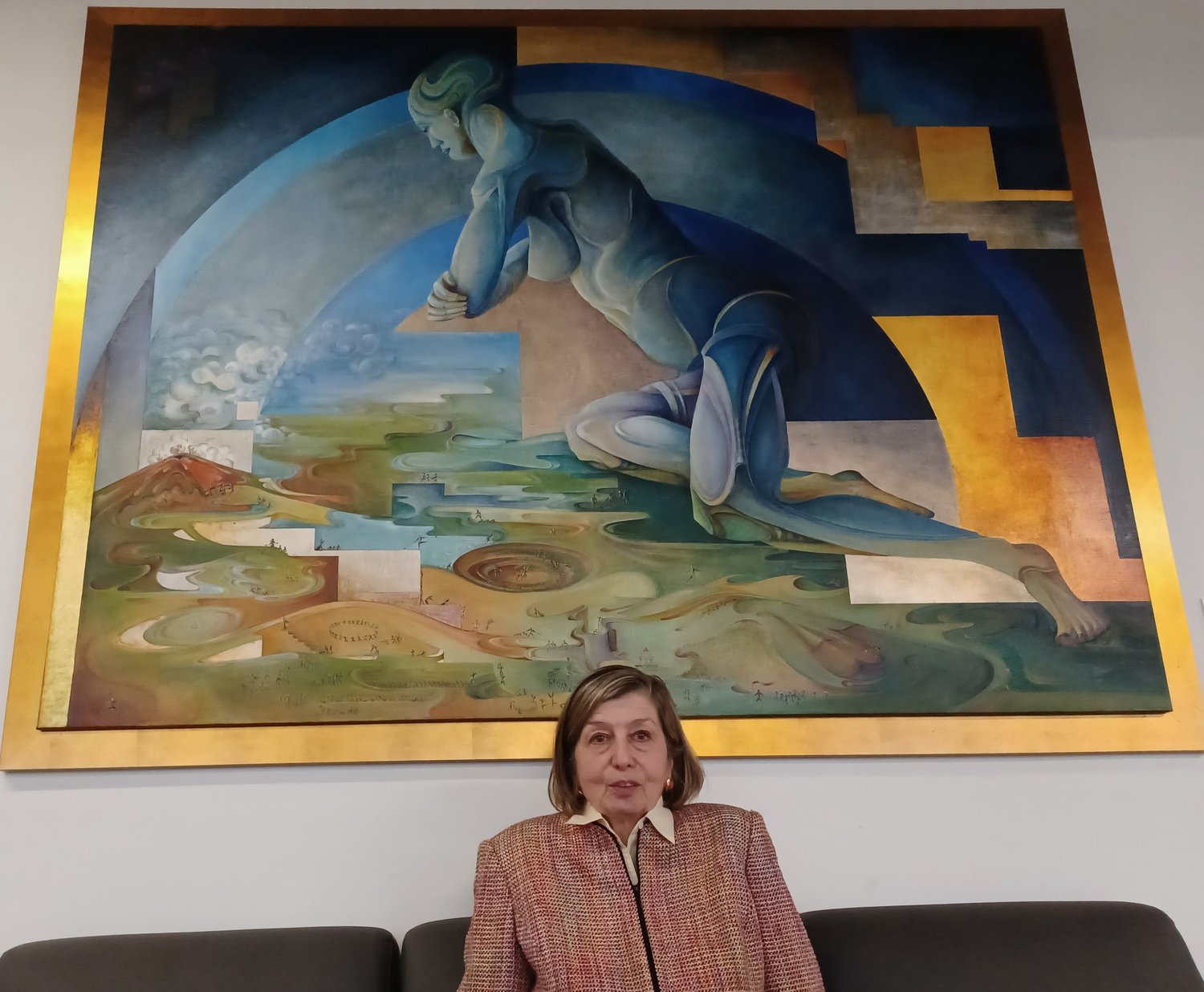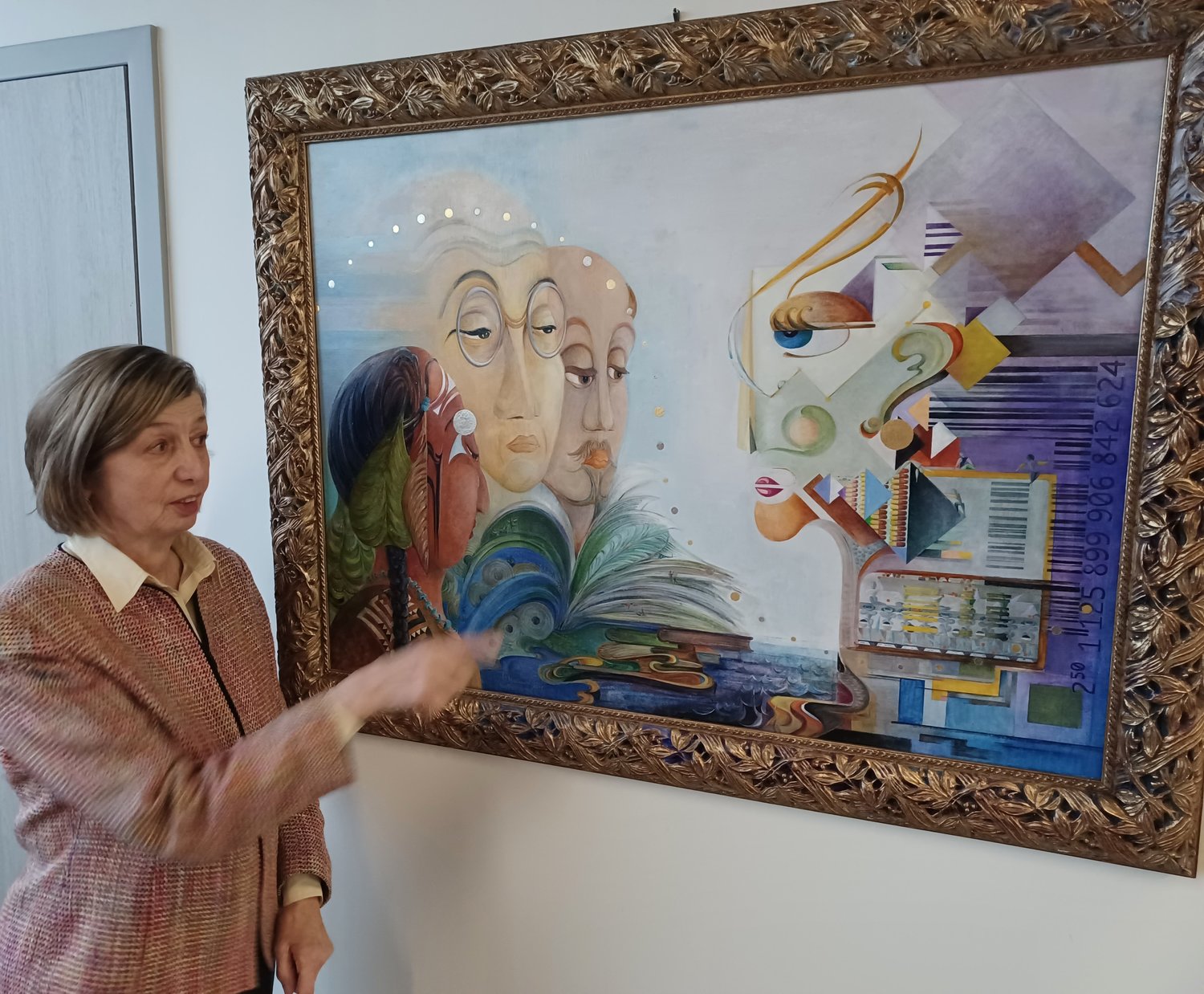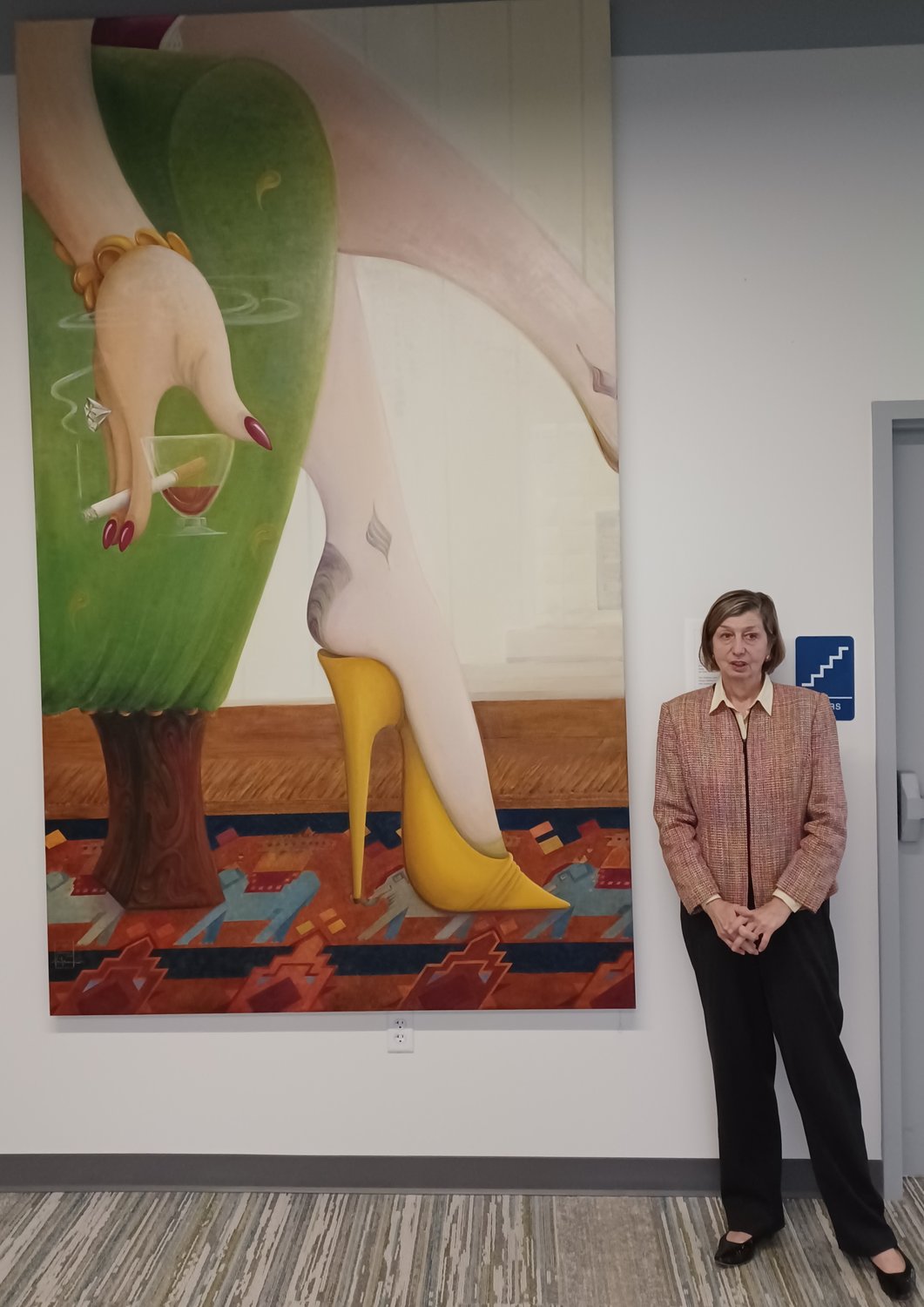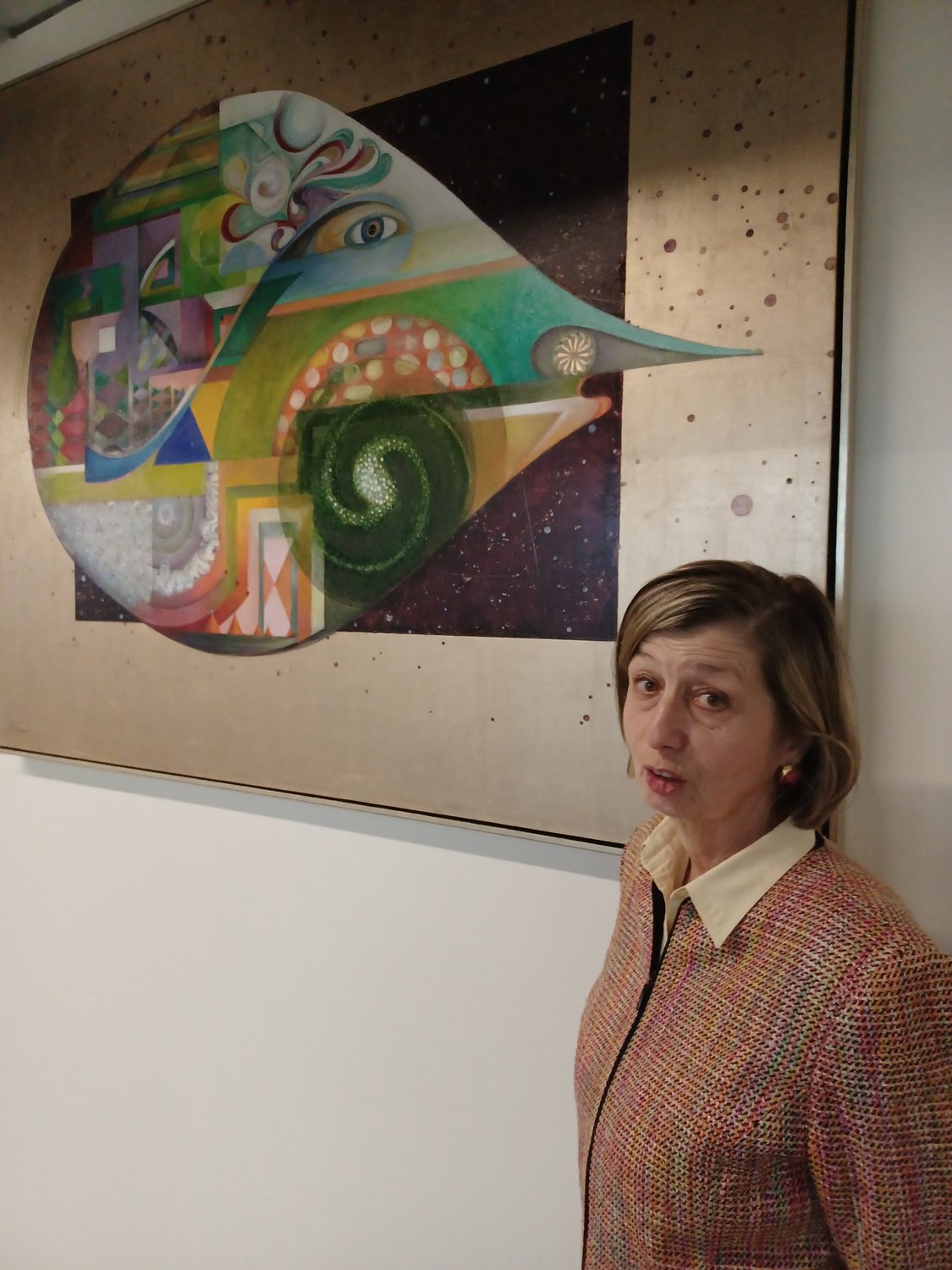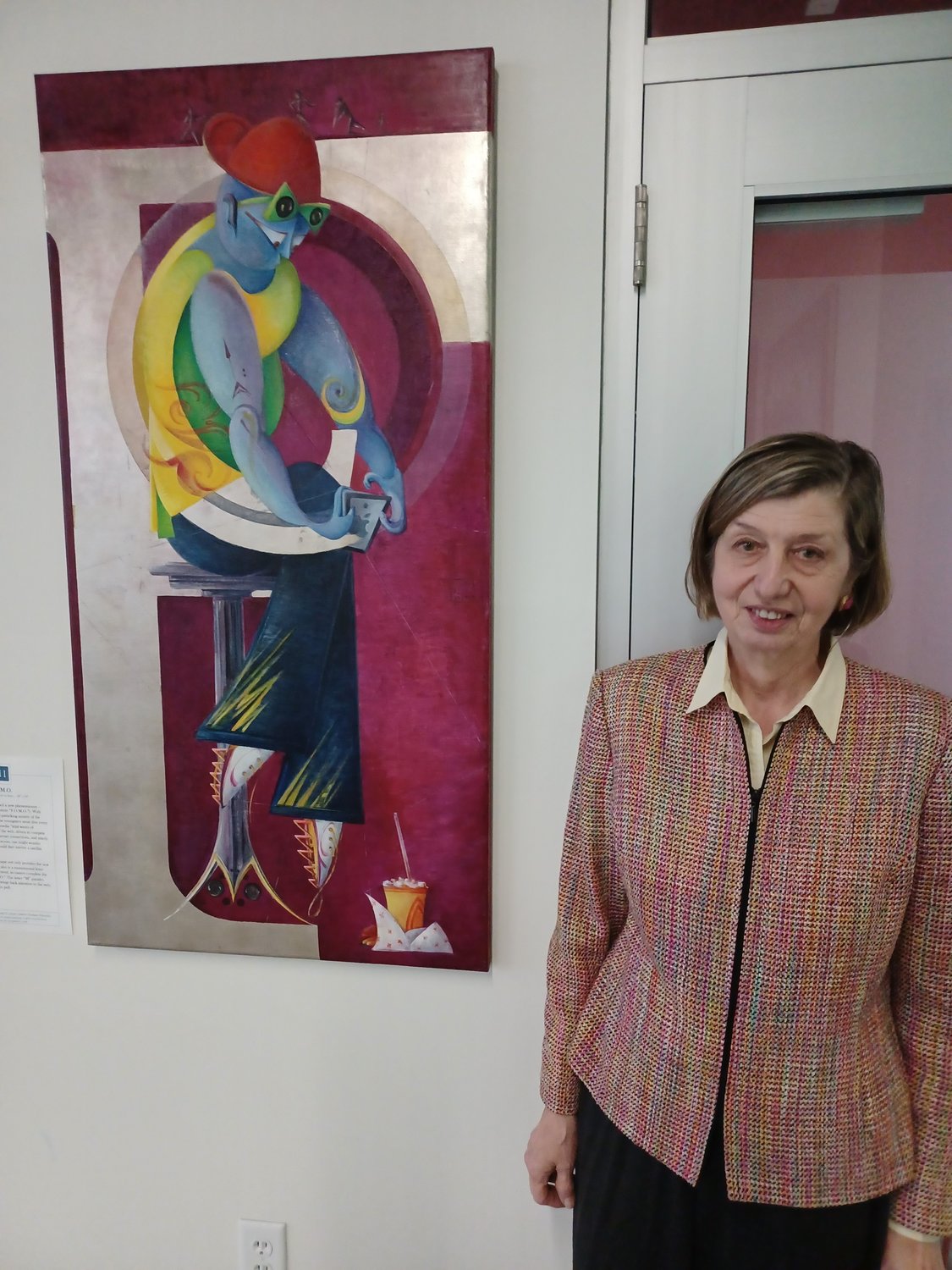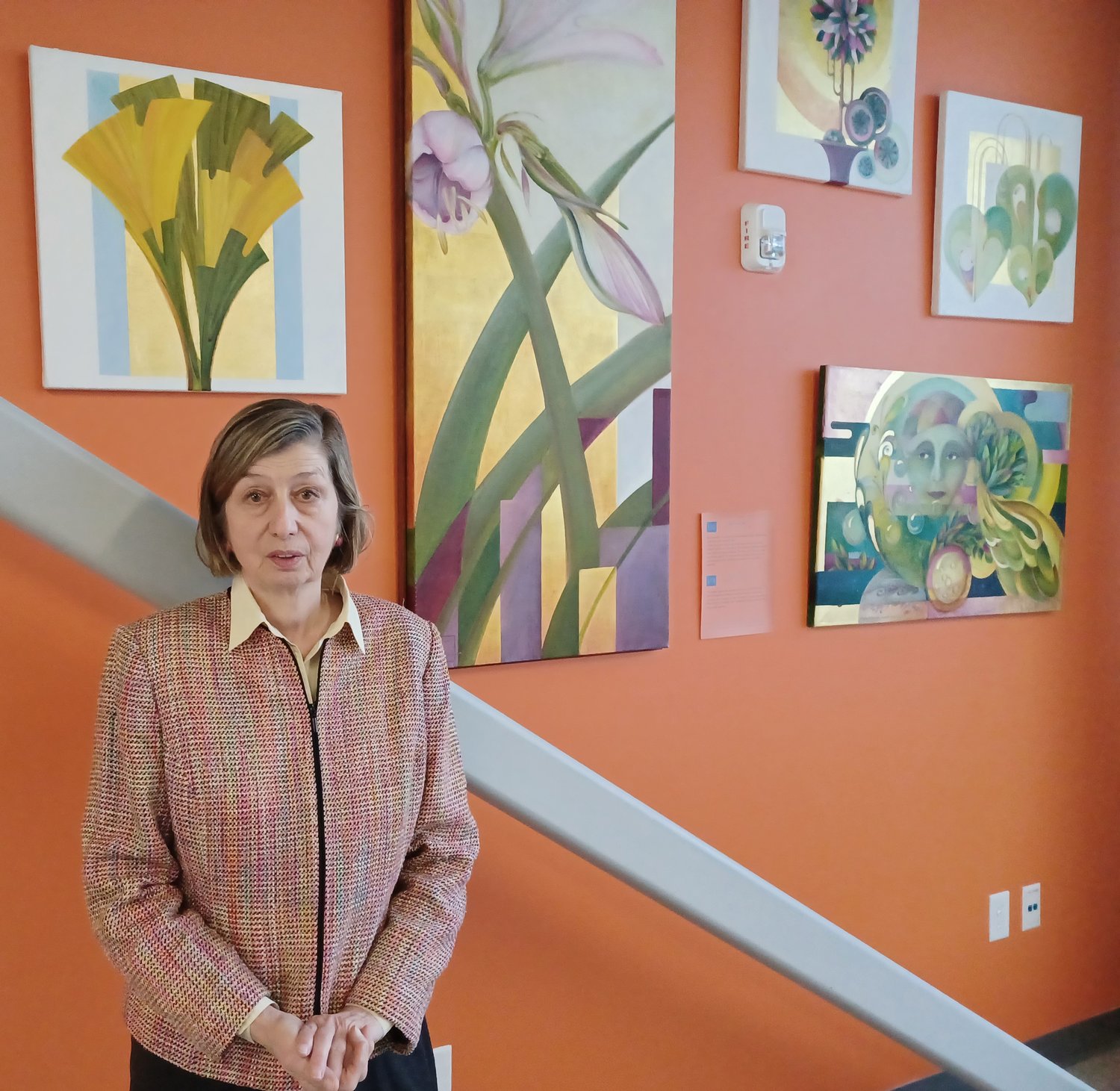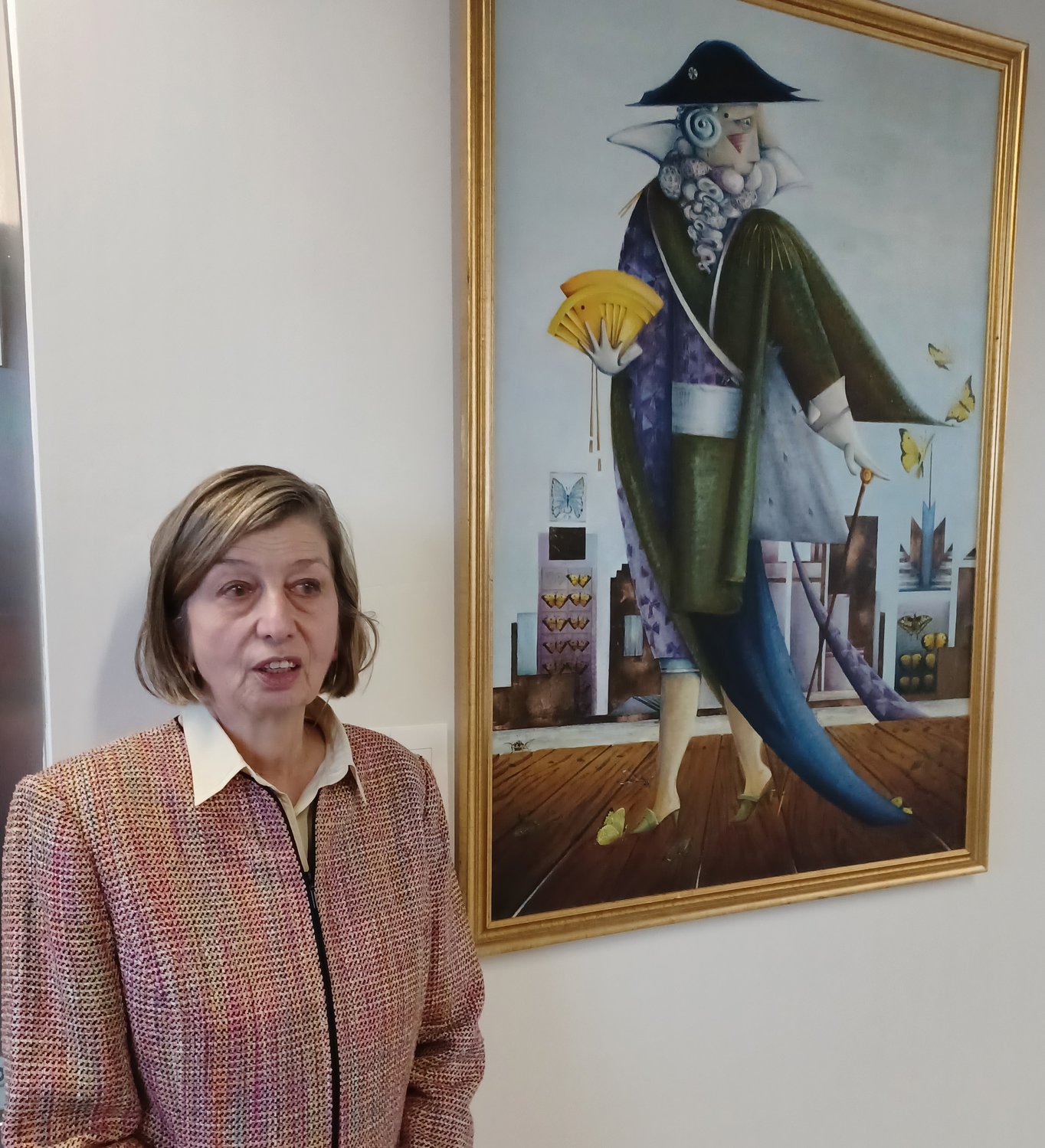Unique paintings of Susanne Schuenke exhibited at the link
What constitutes “real” art?
Ask a dozen people, get a dozen answers, some more useful than others.
Ask a unique, successful artist like Susanne Schuenke, and she may tell you that when you encounter authentic art, it provokes a response and stays with you afterward. It nourishes the person who takes it in.
“Then, you have experienced real art,” she says.
It’s something that anyone viewing Schuenke’s work can appreciate, because her paintings fairly insist that the viewer navigate their layered meanings and interpret each new discovery. These are not products of interior design, hung on the wall to match the drapes. These are provocative explorations of theme and the elements of shape and color and line that aid the viewer’s journey.
“Art has a function,” says Schuenke. “A very important function. It’s not simply luxury or decoration. Decorations don’t feed you. Art enriches you.”
Schuenke’s work immediately draws people to it. They want to know more about the vibrant, often unexpected, colors and the figures comprised of swirls and circles amid stark geometric shapes and enigmatic symbols.
And, though interpretation can be intensely personal, there is perhaps no better source than the artist herself.
Fortunately for art enthusiasts, Schuenke regularly makes herself available to discuss her work during her Artist Talk & Walk events at the link, where many of her works are exhibited.
The link is a unique, 22,500-square-foot co-working space, innovation incubator and cultural centerpiece located at 425 Town Plaza Ave. in Nocatee Town Center. It lists events, such as Schuenke’s Talk & Walk, on its website at thelink.zone/events-1.
Developing her talent
Schuenke was born in Düsseldorf, Germany, where her parents were painters and graphic designers and encouraged her artistic talents.
“According to them, ever since I could crawl I had a marker in my hand,” Schuenke said. “I could always draw.”
As Schuenke entered her teenage years, her parents continued to give her guidance on her work.
However, when she was considering her academic options following graduation from high school, her parents said no to her entering an art academy.
“At the end of the ‘70s, there were some behaviors taught that had nothing to do with art,” she said.
So, she enrolled at the university where she studied art history, something that might sustain her financially should her art not produce the necessary income. It was a decision that may have aided her later in creating her own style, as she didn’t have to unlearn what they were teaching at the art academy.
Ultimately, she earned her doctorate in 1986 at the University of Cologne.
As it turned out, her art has indeed sustained her.
“I’m very privileged that I can actually earn a good living with my art,” she said. “I love my work — and art is also work, by the way. It’s not all dreaming and that. It’s discipline and creativity, two things that go together. That’s also what I learned from my parents.”
She has exhibited her works in England, Germany, France and the United States. Her paintings can be found in collections around the world.
Shapes and dimensions
When Schuenke begins a new painting, she typically starts with shapes. As she works, the idea quickly evolves “and the intellectual contents come rather fast,” she said.
Typically, she will start with a watercolor. If she likes it, she’ll follow with a painting in oil, often quite a bit larger than the watercolor. She experiments with size, projecting her watercolor on the wall to find dimensions that are most powerful without being overwhelming.
“There is a size where it is so large that you get afraid,” she said. “Not comfortably large, but threatening.”
Such considerations are particularly important in works like “A Change in the Weather,” which depicts a metaphorical image of a malignant political figure.
“There is really a warning in this painting,” she said. “Therefore, it cannot be so big that you would like to leave the room. That, and I miss my aim. The painting is for the observer, not for emptying the room.”
That work measures about 4 by 4.5 feet, which is a modest size compared to many of Schuenke’s other works.
“The Big Race,” for instance, measures 6.5 by almost 12.5 feet. It’s an expression of pure energy depicting five racehorses that present a kind of metaphor for competition in life and the range of possible outcomes.
The winning horse is golden and dominates the race. The light blue horse in second place shows a bit of strain as it holds on to its position. The third, in orange, exhibits the pressure of the fight, while the fourth is doomed to lose. The fifth horse, according to Schuenke’s description, “drowns hopelessly in the dark clouds of failure.”
Due to the many details, “The Big Race” is best served by its large size.
Decyphering the works
According to Schuenke’s website, her content “moves from lyric-narrative stories to philosophical themes and socio-political topics.”
Those who visit Schuenke’s exhibited works will almost certainly be curious about dominant themes, which the artist presents boldly without being obvious.
“There is a big, big question: What is life about, and what is beyond life?” she said.
She encourages people to search for the answers, frequently beginning with the title of the work, which sometimes contains a play on words. An example is “The Cardinal Question,” which depicts a large, bright red cardinal taking account of an ugly, gray world. The title also uses “cardinal” to mean “fundamental,” as in “the fundamental question.”
Many elements, not obvious at first, increasingly reveal what the painting has to say the longer one studies them. In “Watching Us,” an Olympian figure gazes down upon ant-like people engaged in a wide range of activities that reveal the range of human ambition and emotion. “A Room Full of Guests” depicts five stylized women in a variety of attitudes. Nearby are spiritual entities that add to the viewer’s understanding and whispy, esoteric presences that provide opportunities for speculation.
Schuenke said she hopes her paintings will survive and speak to future observers and spark their curiosity about this time in history and what we think about.
For the present, Schuenke’s Walk & Talk events provide insights as only the artist can provide.
To learn more about Schuenke and her art, go to susanneschuenke.com.


